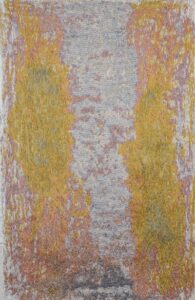 What is Textile Art? Textile art is a form of visual art that uses textiles, which are materials traditionally associated with fabrics and fibers, as the primary medium for creative expression. This art form encompasses a wide range of techniques and approaches, and it can take various forms, including two-dimensional and three-dimensional works. Here are some key aspects of textile art:
What is Textile Art? Textile art is a form of visual art that uses textiles, which are materials traditionally associated with fabrics and fibers, as the primary medium for creative expression. This art form encompasses a wide range of techniques and approaches, and it can take various forms, including two-dimensional and three-dimensional works. Here are some key aspects of textile art:
- Materials: Textile artists work with a variety of materials, such as fabric, thread, yarn, fibers, paper, and even found objects. These materials are manipulated, transformed, and combined to create artworks.
- Techniques: Textile artists employ a diverse range of techniques, including sewing, embroidery, quilting, knitting, crocheting, weaving, felting, dyeing, printing, and more. These techniques can be used individually or in combination to achieve desired artistic effects.
- Two-Dimensional Art: Textile art can take the form of wall hangings, tapestries, paintings on fabric, and other two-dimensional works. These pieces often explore color, texture, pattern, and composition.
- Three-Dimensional Art: Textile artists also create three-dimensional sculptures and installations using textiles. These can range from soft sculptures and wearable art to large-scale installations made from fabric and other materials.
- Narrative and Conceptual Art: Many textile artists use their work to convey stories, emotions, or conceptual ideas. They may explore themes related to identity, culture, gender, politics, and environmental issues.
- Functional Art: Textile art is not limited to gallery or museum settings. It extends to functional items like clothing, accessories, and household textiles. Some artists incorporate artistic elements into everyday objects.
- Collaboration: Textile artists often collaborate with other artists, designers, and communities to create collaborative and socially engaged projects. This can foster cultural exchange and community engagement.
- Historical and Cultural Significance: Textiles have played a significant role in the history and culture of various societies. Textile art can draw on these traditions, preserving and reinterpreting historical techniques and motifs.
- Experimentation: Many textile artists push the boundaries of the medium, experimenting with new materials, technologies, and approaches. This spirit of innovation contributes to the evolution of textile art.
- Sustainability: Some textile artists are increasingly focused on sustainability, using eco-friendly materials and techniques, or repurposing existing textiles to create their art. This aligns with broader concerns about environmental conservation.
